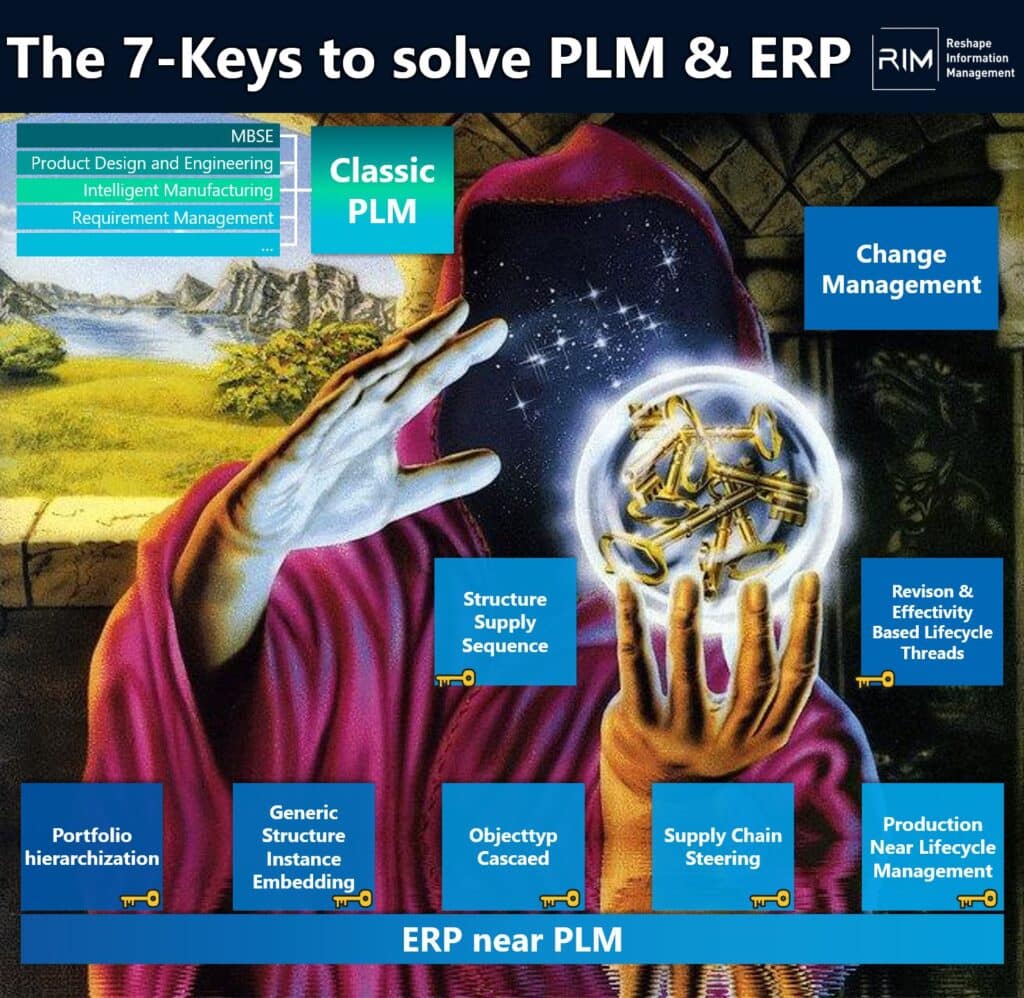"Product Lifecycle Management" (PLM) as a concept for the seamless integration of all information generated over the life of a product is not new.
However, the procedural and technical integration of PLM into corporate processes continues to pose major challenges for many companies. The requirements of tomorrow need a digital core, an end-to-end digital enterprise by means of networking all applications. Only then is a continuous and sustainable business transformation possible.
The Future PLM study
For the study "Future PLM" - conducted by BearingPoint, the Karlsruhe University of Applied Sciences (HsKA), Prof. Dr. Jörg W. Fischer and the Steinbeis Transfer Center for Computer Applications in Mechanical Engineering (STZ-RIM) - we interviewed more than 50 subject matter experts from the German-speaking region (Germany, Switzerland, Austria). These come from the processing and manufacturing industry with a focus on mechanical engineering, in the Automotive industry and automation and process industries, as well as related sectors such as medical technology, electrical and semiconductor industries, and aerospace and military.
The core results of the study:
- 71 percent of companies are inadequately prepared for increasing product and production complexity
- 83 percent of companies do not have a consistently defined product configuration process
- More than 80 percent of respondents maintain variant management manually or with simple tools
- 67 percent of respondents plan to drive PLM-ERP-MES integration to optimize value creation
- 78 percent of companies see digital twins as a competitive advantage
PLM as enabler for IoT, Industry 4.0 and Digital Twin - recommendations for action
Supporting collaboration with development partners, suppliers, and upstream and downstream systems is a core requirement of a future PLM. However, only about ten percent of companies have already fully established this process. To realize an end-to-end value chain, organizational silos must be dismantled and process-related and media discontinuities must be resolved. At the same time, the legal framework and the protection of intellectual property (IP) of the process partners must be ensured. The results of the study confirm that this process of organizational change should be carried out as part of an overall digitization strategy rather than in isolated individual initiatives.
The classic "stand alone" PLM solutions are reaching their limits in the course of the immensely increased product, process and production complexity. There cannot be the "one" system for the complete processes and specialist domains involved in the product lifecycle. PLM architectures must be based on consistent but extensible master and structural data, but must be independently and flexibly adaptable to changing processes (such as ETO, CTO, CTO+, etc.) and organizational structures.
Modular products are the prerequisite for the reuse of existing assemblies. This study shows that almost 90 percent of companies allow at least partial customization of their products. PLM must support both variant configuration and the proof of use of modules and kits across different brands or joint ventures, variants and derivatives. Only end-to-end complexity management - from quotation preparation to commissioning or recycling - realizes the full success potential of individualized products for customers and the company itself. Here, the "digital twin of a product" forms a decisive competitive factor in the end-to-end mapping of product data.
In addition to clearly described and digitized processes, data standardization and harmonization form the foundation for digitization and the basis for IoT and Industry 4.0 scenarios. Only they enable competitiveness in the age of increasing product and production complexity.
The complete study as well as the infographic is available to you here available for download free of charge. We are very interested in your opinion - do you agree with the study? Feel free to send us your feedback via our Contact form.





